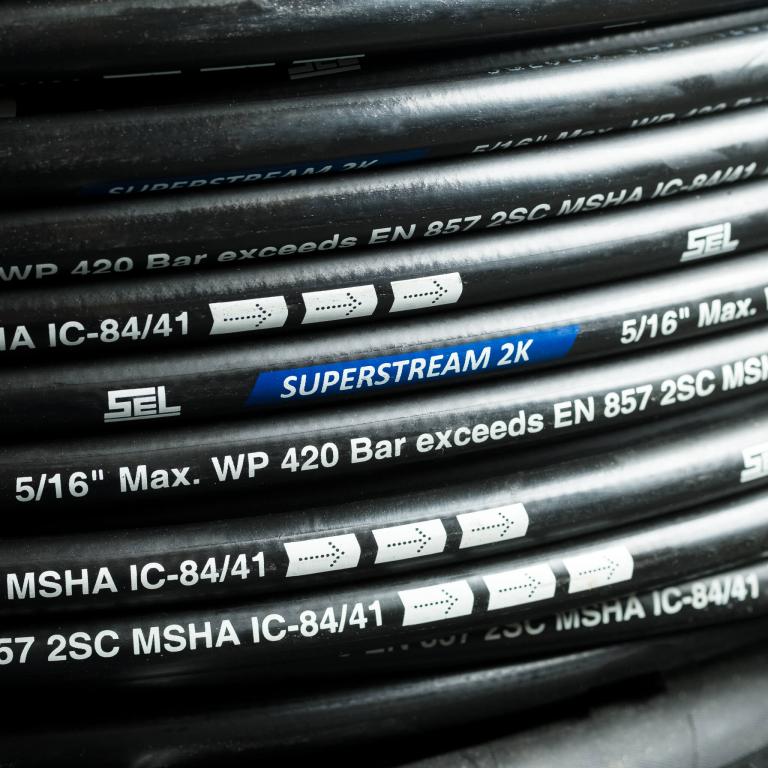Hydraulic Hoses – What Are They and What Are They Used For? The Most Flexible and Durable Options

In this article, you'll learn:
- What materials are used in the production of hydraulic hoses
- How to use hydraulic hoses safely
- Which hydraulic hoses are the most flexible
Hydraulic hoses are crucial components of hydraulic power systems. They are responsible for transporting working fluids under high pressure and are used in construction, agricultural, and industrial machinery, as well as in production and transport systems. Their durability and proper selection for specific operating conditions directly impact the safety and efficiency of the entire system. So, what makes hydraulic hoses special, and what should you pay attention to when choosing one?
Construction and Materials Used in Hydraulic Hoses
Hydraulic hoses consist of several layers, each with a specific role to ensure flexibility, pressure resistance, and durability in harsh environments. The key components include:
- Inner core – typically made from synthetic rubber that resists hydraulic oils, ensuring tightness and chemical resistance
- Reinforcement layer – usually made from braided steel wire or textile fibers, increasing tensile strength and pressure resistance
- Outer protective cover – shields against mechanical damage, UV radiation, and chemical exposure
The choice of materials significantly affects hose performance and longevity. A great example is Sel hydraulic hoses, known for their reliability in demanding applications.
Another important factor is resistance to extreme temperatures—both high and low. Hoses must maintain their properties under harsh conditions. Compatibility with various hydraulic fluids also plays a critical role in long-term performance. Regular inspections help prevent unexpected failures and extend hose life.
Applications and Operating Requirements
Depending on their purpose, hydraulic hoses must meet specific standards for working pressure, temperature, and environmental resistance. High-pressure hoses are used in extreme load conditions—such as in construction or mining machinery. When choosing a hose, it's important to match the diameter, connector type, and abrasion resistance. A poorly chosen hose may lead to system failures and financial losses, so it’s wise to rely on proven, high-quality products that ensure long-term safety and durability.
Proper operation also involves regular maintenance and checks. Hoses should be protected from twisting, excessive bending, and mechanical damage that could impact their performance. Using protective covers extends the life of hydraulic systems by preventing external damage.
The Most Flexible Hydraulic Hoses
Flexibility and environmental resistance set M-flex hydraulic hoses apart from the competition. Thanks to innovative manufacturing technologies, these hoses combine high strength with outstanding flexibility—making installation easier even in tight or hard-to-reach spaces. They resist vibration and dynamic pressure changes, making them ideal for demanding applications.
One of the key advantages of M-flex hoses is their high resistance to material aging, allowing for longer service life. This means less downtime and lower maintenance costs—boosting operational efficiency.
It’s also important to store and transport hoses correctly to avoid mechanical damage before installation. Proper use and servicing help unleash the full potential of hydraulic hoses and prevent unexpected breakdowns.